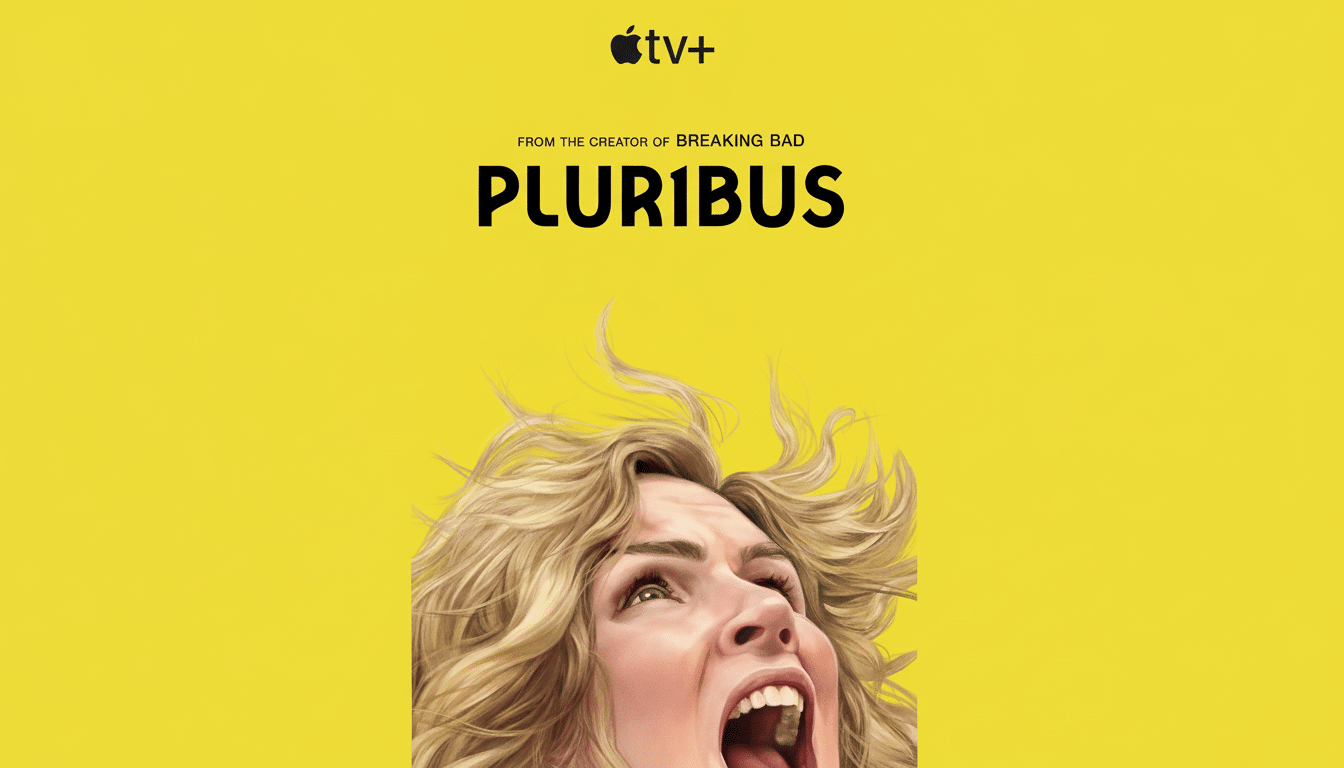As the credits roll on Apple TV’s new series Pluribus, one line jumps out among the typical legalese and animal-safety disclaimers: “This show was made by humans.” It is one short sentence with a big message from creator Vince Gilligan, who has made clear in recent interviews that not a single bot wrote or contributed to the images or performances of his first foray into sci-fi since The X-Files.
At a time when Hollywood is still figuring out where AI fits in its creative pipeline, Gilligan’s label operates as a stamp of origin. It makes a bid for provenance, telegraphs values, and invites other filmmakers to say so too — a brand position statement at the heart of a series that blends character-driven drama with an alien-invasion premise directed by Rhea Seehorn.

Why Vince Gilligan Is Planting a Human-Made Flag
Gilligan has not been mincing words when talking about generative AI; he’s called it antithetical to authorship in a Variety feature on Pluribus.
His position slices through a noisy debate with an implicit promise to viewers: What you’re watching was dreamed up and stitched together by people, not statistical models trained on other people’s work.
There’s also a sustainability subtext. Have we so quickly forgotten the University of Massachusetts Amherst academic research from years ago showing that training big language models can entail carbon costs equivalent to the lifetime emissions of several cars? And, while model efficiency improves, the industry’s hunger for compute grows unabated, pushing Gilligan’s “human-made” pledge into at least partially an environmental — not just artistic — space.
How Hollywood’s Ongoing Battle Over A.I. Sets the Stage
The disclaimer comes in the wake of historic labor actions. After the Writers Guild of America’s 148-day strike in 2023, studios were blocked from treating what AI produces as “literary material” or requiring writers to work with it. Against that backdrop, SAG-AFTRA obtained consent and compensation protections for digital replicas, an issue that arose in connection with reports of background actors having been scanned for reuse.
Outside guild contracts, regulators and courts are still adjusting to what “authorship” means in the AI age. The U.S. Copyright Office has been clear for years that copyright covers human creativity and not machine-created text or images without meaningful human input. On the other hand, surveys from Pew Research Center and Morning Consult indicate that more than ever, audiences crave transparency when AI is deployed in media and marketing.
With that background, a plainspoken end card is savvy marketing and transparent policy in one line. It’s legible to fans, legible to guilds, and now increasingly, by default, it’s legible even to partners throughout post-production who might very well be adopting AI tools without realizing it.
Could Human-Made Labels in Entertainment Go Mainstream?
Other creative fields have been moving in this direction. You see comic anthologies and tabletop games as part of crowdfunding with “No AI” badges. Game markets have introduced rules around disclosure for AI-enhanced assets. In journalism, some news organizations drop notes when AI helps with transcription or research. The methods are all different, but the objective is consistent: protect trust by signaling provenance.

Should studios follow with their own labels, the language will be key.
“Made by humans” means no generative AI in writing, concept art, VFX images, or voice. It does not have to exclude traditional algorithmic tools in color grading, compositing, or noise reduction — software that is mathematical rather than generative. It’s the question of what constitutes help versus authorship that audiences and artists most commonly try to draw a line between.
But to hold that line, productions will have to do more than slap a slogan on the playbill. Expect boilerplate in vendor deals that prevents generative models in deliverables, audit rights to asset provenance, and union-compliant workflows for the writers’ room or edit bay. If human-only starts to be a selling point, it will be enforced as much in the paperwork as on the credits.
Behind Pluribus and the Creative Bet Driving the Series
Pluribus returns Gilligan to the science fiction genre with a tension that’s firmly planted in the world of Breaking Bad and Better Call Saul. Rhea Seehorn stars as a romantasy writer swept up in the hullabaloo of a first-contact catastrophe — a nifty reversal that allows genre spectacle to circle around character choices. The promise of human-made storytelling is not merely a label here — it’s a creative thesis that prioritizes voice, specificity, and moral complexity over machine pastiche.
Apple’s platform has been a haven for creator-led, meticulous shows, and Pluribus sits comfortably in that positioning. If the series does find an audience, its closing-card declaration could outlast the premiere, establishing a new normal of expectations for an era in which so many productions aspire to be as specific about how they were made.
What to Watch Next as Human-Made Labels Gain Attention
Watch whether guilds begin pressing for standardized “AI disclosure” language in future contracts, streamers start tagging metadata as a service to their user base, and awards bodies demand production attestations.
The next time the animals are wrangled in a credit sequence, you might receive some information about who wrote them — and who didn’t.

